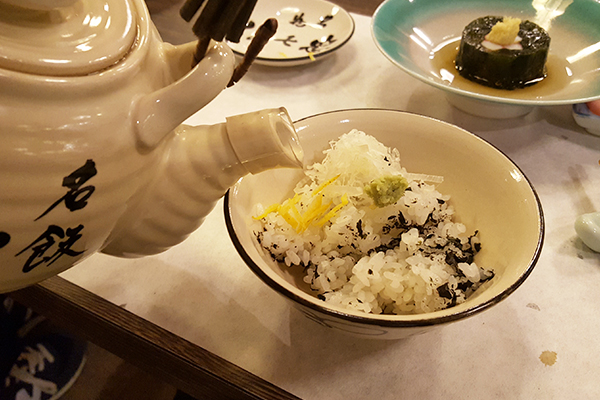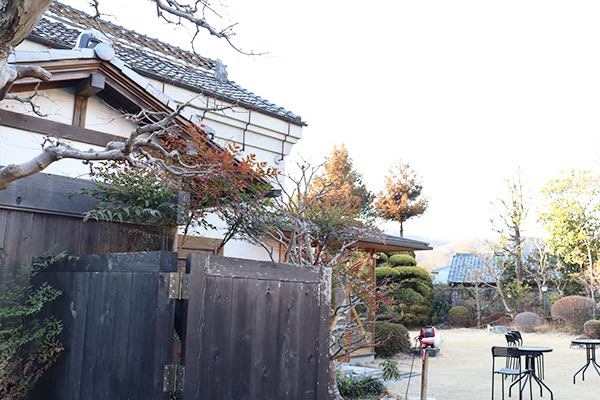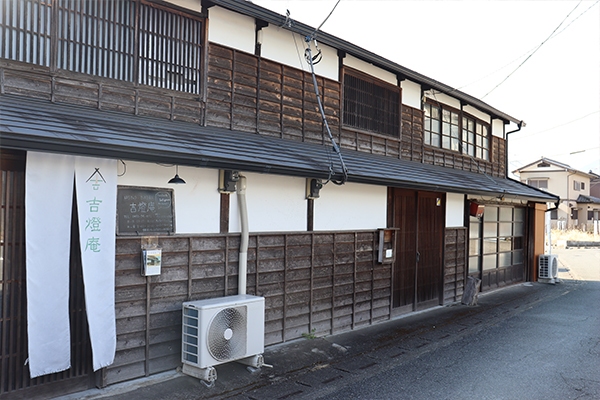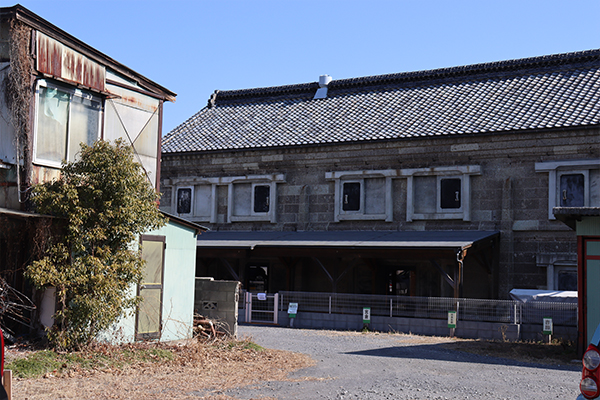Washi no Sato (Washi paper village) with abundant water and tradition – Ogawa-machi and Higashichichibu-mura
features

Updated on:2025.06.17




Ogawa-machi and Higashichichibu-mura are situated in the heart of Saitama Prefecture, surrounded by mountains. Traditional crafts such as Ogawa Washi paper, with a history of approximately 1300 years, sake brewing and woodworking are passed down from generation to generation in this region.
Surrounded by rich nature and history, visit here to experience Japanese craftsmanship and the high-quality mountain water of this village that has been producing Japanese Washi paper for over a thousand years.
A river town that holds a history of about 1,300 years, with tranquil streets and abundant water.
Ogawa-machi is conveniently accessible by train from the city center. From Ikebukuro, take the Tobu Tojo Line to Ogawamachi Station, which takes about 70 minutes.
In front of the station, there is the Ogawa-machi Tourist Information Center “Musubime,” offering tourist information as well as convenient amenities such as bicycle rental services, coin lockers, antique kimono dressing services, souvenir sales and a free resting area. It’s a convenient stop before starting your journey.
The architecture of “Musubime” itself is a renovated structure of a Japanese-style inn (Kappo ryokan) that was founded in the early Showa period (1926-1989). The original pillars and beams from that time are still in use, and they are adorned with decorations of Ogawa Washi paper, which we will introduce this time, creating a space where you can feel the tradition and culture of Ogawa-machi.


When walking along the streets in front of Ogawa-machi Station, you’ll find scattered guideboards with explanations about the “Manyoshu,” also known as the Collection of Ten Thousand Leaves), which is the oldest existing anthology of Japanese poetry compiled from the late 7th to the 8th centuries. It is said that this was due to the fact that around 1269, the scholar Buddhist monk named Sengaku, a towering figure in the history of research on the “Manyoshu,” dedicated his life to deciphering the “Manyoshu” and completed a commentary on it here in Ogawa-machi.
There are also information boards introducing tourist attractions related to waka (Japanese poems), so it would be a good idea to check them out while enjoying a walk around Ogawa-machi. As you explore the surrounding area, you’ll encounter buildings with old architectural styles. The main building of the traditional Japanese inn “Futaba,” conveniently located close to the station, is a two-story wooden structure built in 1933 and designated as a registered tangible cultural property of the country. It’s built in the traditional Japanese architectural style known as “Sukiya” architecture, where you can still enjoy Kappo cuisine (Kappo: means “to cut and to cook,” an all-encompassing word for a less formal cuisine that emphasizes the proximity between the diner and the chef who is cutting and cooking the food) and the garden.
Continuing the stroll through Ogawa-machi, you can see precious buildings such as the “Rokken Nagaya,” a row of six earthen-walled plaster houses built in the late 1880s, and co-working space “NESTo,” renovated from century-old warehouse buildings. Strolling through these quiet streets that retain the atmosphere of olden days is very soothing. The Tsukigawa River flows through the center of the town. The abundant water of this river has long supported Ogawa-machi’s papermaking and sake brewing traditions.


“Hosokawa Paper” registered by UNESCO – What is Ogawa Washi?
Ogawa-machi is known for its traditional craft of “washi” (Japanese paper), which has been passed down since ancient times. By the late Edo period (1600 – 1868), when the demand for paper increased, it was a production area with over 750 papermaking workshops.
Among the famous washi paper produced in Ogawa-machi is “Hosokawa Paper,” a handmade mulberry paper. Hosokawa Paper was created in Hosokawa Village, located at the foot of Mount Koya in Kishu (present-day Wakayama Prefecture), for use as Hosho*. The paper made in Ogawa-machi resembled Hosokawa Paper, and this is theorized to be the origin of the name.
*A hosho is an Imperial Court or shogun’s decree written on a piece of paper, and the sturdy washi used for these decrees is called hosho-shi, (a kind of traditional white, uncreased Japanese paper, made from high-quality mulberry wood).
The craftsmanship of Hosokawa paper, renowned for its top quality among Japanese handmade papers, was designated as a National Important Intangible Cultural Property in 1978. True to its name “Washi (Japanese paper),” its exclusive raw material is a variety of mulberry (a deciduous shrub belonging to the Moraceae family) only grown in Japan. The paper is crafted using traditional methods and tools.


In 2014, the technique of making “Washi” (Japanese paper) was registered as an Intangible Cultural Heritage by UNESCO. Other registered papers are “Sekishu Banshi” from Shimane Prefecture and “Honminoshi” from Gifu Prefecture. Additionally, there is “Hosokawa paper” which originated in Hosokawa Village in Kishu and has been passed down to Ogawa-machi and Higashichichibu Village.
In Ogawa-machi, there is a facility where you can experience papermaking using traditional tools. One of them is the Ogawamachi Washi Experience Learning Center. Making Washi involves various preparations such as processing materials before handcrafting. If you visit during the winter, you can observe the process of refining mulberry bark. In addition to the papermaking experience, they also sell goods made from Washi paper, so why not stop by for a souvenir?
Ogawa-machi Washi Experience Learning Center
For more details, please visit:
https://www.town.ogawa.saitama.jp/gyosei/sosiki/11/15/2/67.html


The next place we visited was “Michi no Eki – Higashichichibu Washi no Sato.”
This facility, located in Higashichichibu Village, was developed as a roadside station and offers activities such as experiencing washi paper making, strolling through the garden, dining and purchasing souvenirs.
On the premises of “Washi no Sato,” there is a designated tangible folk cultural property of Saitama Prefecture, a papermaking house built at the end of the Edo period (1850s to 1860s), which has been relocated and restored. At this house, visitors have the opportunity to learn about and experience papermaking, as well as to observe tools used in the process during that time. Additionally, there is a workshop called “Tsukigawa” where visitors can experience papermaking while receiving instruction.
Michi no Eki – Higashichichibu Washi no Sato
Click here for details:
http://www.higashichichibu.jp/hosokawashi/washinosato


Traditional Chuushichi-meshi Rice – Lunch at a Kappo Ryokan with Sukiya-style Architecture
After experiencing washi papermaking, why not indulge in a lunch featuring seasonal delicacies at “Futaba,” the long-established Kappo Ryokan?
This restaurant has a history of over 270 years, and the existing two-story, tile-roofed wooden building with sukiya-zukuri style architecture was constructed in 1933. Still exuding an old-world charm, it is said that even renowned film director Akira Kurosawa visited here.
The walls of the first floor “Tsuki no Ma” are crafted using a technique called “Sabikabe,” which incorporates iron powder into the plaster. This creates a charming design that allows the rust to change over time, and it is said that restoration of this technique is now challenging.
The design of the staircase railing leading to the second floor is also a valuable relic from the past. The large hall on the second floor, where traditional Japanese dance performances accompanied by shamisen(a three-stringed traditional Japanese musical instrument) were once held, is still used for events like wedding receptions. In the tokonoma alcove stands a majestic large maple pillar, and the ceiling and shoji screens are adorned with intricate designs that evoke the atmosphere of the building’s construction era.

The garden of Futaba is a circuit-style Japanese garden with a foundation of stones, where you can find the “Sazare Ishi (pebble)” mentioned in Japan’s national anthem “Kimigayo,” as well as charming “Usagi Ishi” (rabbit-shaped stones).
The recommended menu here is the “Chushichi meshi,” one of Japan’s five major rice dishes. It consists of warm rice topped with fresh seaweed and a unique broth, eaten similar to Ochazuke (tea poured over rice). The seaweed symbolizes the depth of Zen, the wasabi garnish represents the sharpness of a sword, and the Yuzu has a fragrant aroma, symbolizing the spirit of calligraphy.
Kappo Ryokan “Futaba”
Click here for details:
https://ogawa-futaba.jp

Ogawa-machi: Ideal for Sake Brewing ~ Utilizing Abundant Groundwater for Sake Production
Japanese sake has gained international attention, giving birth to many sake enthusiasts who are captivated by its charm. In fact, Saitama Prefecture ranks fourth in Japan for sake production, and is a thriving area for sake brewing, with many breweries located in the prefecture.
The key to the taste of Japanese sake lies in high-quality water. The surrounding area of Ogawa-machi, which can produce high-quality washi paper, is a sake-producing region that benefits from its abundant water resources.
The Matsuoka Brewery, which we visited this time, was founded in Ogawa-machi in 1851. At the time of foundation, the pillars and beams of the brewery were transported from the family’s original home in Echigo (present-day Niigata Prefecture) when they relocated to Saitama. It is said that there were two reasons why they moved to the current location of Ogawa-machi.

The first reason is the intersection of two major roads in Ogawa-machi at that time: the Chichibu Oukan Highway, which connected Edo (present-day Tokyo) and Chichibu, and the Hachioji Kaido Road, which connected Hachioji (Tokyo) and Joshu (present-day Gunma Prefecture). This intersection attracted many people. The second reason is that Ogawa-machi was blessed with high-quality water, which is crucial for brewing sake.
Tsukigawa River, which flows near Matsuoka Brewery, is highly transparent and provides excellent-quality water. The water used for brewing sake is drawn from a depth of 130 meters underground, and this high-quality water supports their sake brewing.


Ogawa-machi’s water is limestone-based and has a high mineral content, which promotes the growth of yeast, allowing for minimal processing and making it ideal for sake brewing. Using mineral-rich underground water from the mountains of Chichibu, including Mount Buko, Matsuoka Brewing’s sake has a unique taste that enhances both flavor and aroma, beloved by many. The sake produced here, called “Mikadomatsu,” has won a gold award at the National Research Institute of Brewing.
The brewery is open for casual visits, welcoming solo visitors as well as groups, and offers guided tours in both Japanese and English. At the onsite brewery restaurant, “Shofuan,” guests can dine while enjoying a view of the garden. In addition to tasting Japanese sake and brewing water, visitors can explore a wide range of unique products such as sake-infused jellies and organic cosmetics available only at the brewery. Why not visit for a chance to experience Ogawa-machi’s high-quality water firsthand?
Matsuoka Brewery Co., Ltd.
For more details, click here:
https://www.mikadomatsu.com


Recommended as a souvenir – Washi paper created from a collaboration of the past and present.
A wide variety of items are available at the Kadokura Washi Store in front of Ogawa-machi Station, including handmade Hosokawa paper, Ogawa Washi and traditional Japanese paper crafts. With a selection of suitable Washi paper goods for souvenirs, why not choose one that suits your taste?
Kadokura Washi Store
For more details, click here:
http://www.kadokura-washi.jp
*Other Related Information
“Michi no Eki Ogawa-machi – Traditional Craft Facilities”
For details, visit: https://michinoeki-ogawamachi.com/dentou.php
How was it?
This time, we introduced Ogawa-machi, a town known for its active production of washi paper and sake, focusing on the craftsmanship which utilizes the high-quality water that has been passed down in this area since ancient times.
Just a little north of Tokyo, you’ll find the blessings of nature along with rich history and traditions that continue to thrive. Why not take a trip from the center of Tokyo and enjoy craftsmanship which has been nurtured by the blessings of nature?









